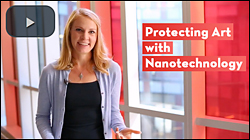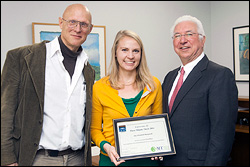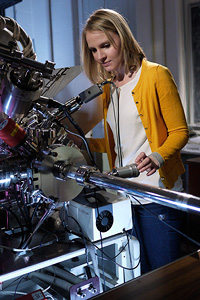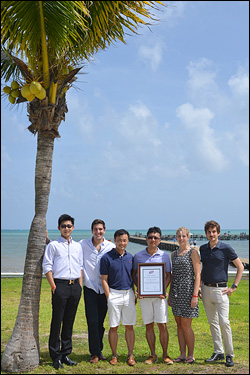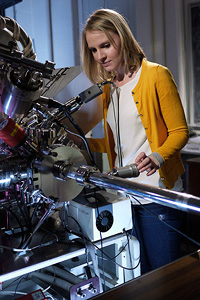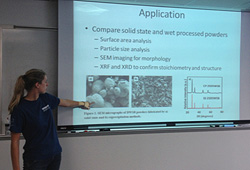News Story
Clark School Students Show Kids How to Get "Juice from Juice"
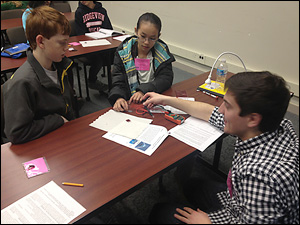
Clark School graduate students Colin Gore, Will Gibbons, Amy Marquardt and Chris Pellegrinelli taught a session of Adventure in Science, held at the National Institute of Standards in Technology, in which they showed kids how to make and test their own dye-sensitized solar cells. Above: Chris Pellegrinelli guides participants through the project. Photo courtesy of Colin Gore.
In February, members of University of Maryland's student chapter of the Electrochemical Society (ECS@UMD) participated in the Adventure in Science program at the National Institute of Standards in Technology (NIST).
Adventure in Science, founded by 4H in 1973, has been held at NIST since 1980, and has grown to include many additional past and present sites including the Bechtel Corporation, Hewlett Packard, the Johns Hopkins University Applied Physics Laboratory, the National Institutes of Health, Urbana Middle School, and the University of Maryland Baltimore County. The program provides an opportunity for those with a love of science to share that passion with students aged 8—15. Each Saturday new presenters visit the program to give talks on a variety of subjects in science, from mathematics to biology, sharing exciting information and activities designed to educate and inspire this younger generation of scientists.
ECS@UMD gave a presentation on the electrochemistry of dye-sensitized solar cells titled "Getting Juice from Juice."
"During the presentation we discussed the fundamentals that govern the generation of electricity from light, such as how there are different wavelengths (or energies) of light and how light particles (photons) interact with matter," says Department of Materials Science and Engineering (MSE) graduate student and ECS@UMD president Colin Gore. "We also spoke about how we can use anthocyanin, a pigment molecule found in blackberry juice, in combination with titanium dioxide nanoparticles and an iodide-based electrolyte to generate electricity through photo-electrochemistry."
After the presentation, Gore and his follow volunteers—graduate students Will Gibbons (Department of Chemical and Biomolecular engineering), Amy Marquardt (MSE), and Chris Pellegrinelli (MSE)—led the students through a hands-on project in which they were able to use these materials, along with electrically conductive glass slides, to fabricate their own dye-sensitized solar cells, which they then tested under different lighting conditions.
"Overall, the students were very excited to be able to participate in the [project] that our ECS@UMD student chapter put together," says Gore. "This program provided an opportunity for our group to share our knowledge of an interesting area of electrochemistry with a group of motivated young scientists."
Learn More:
Visit the Adventure in Science web site to learn more about how kids, parents, and educators can participate in the program.
Published March 9, 2013
